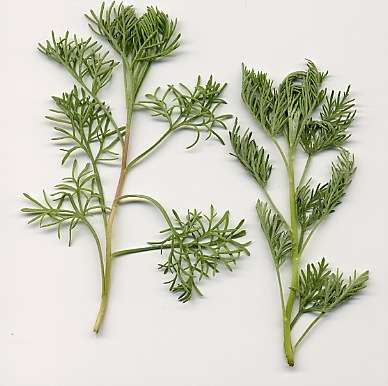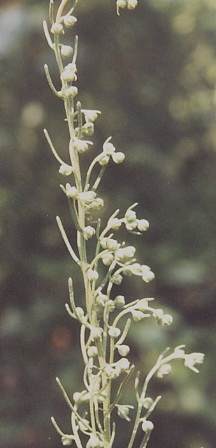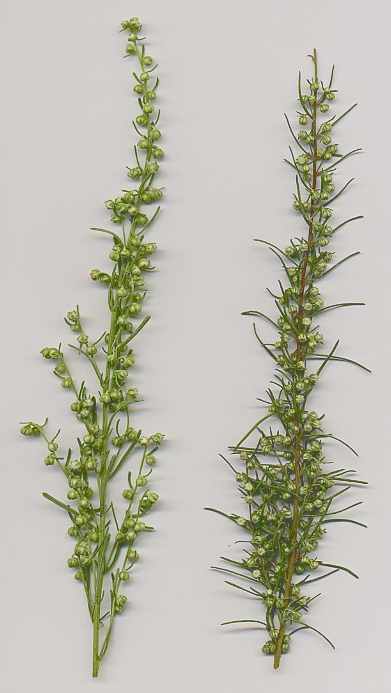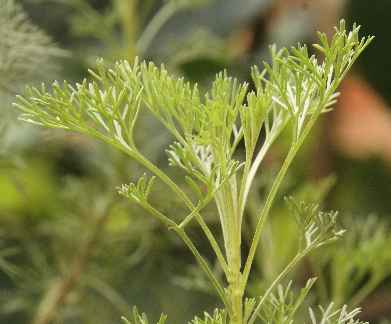
|
| Flower of Southernwood |
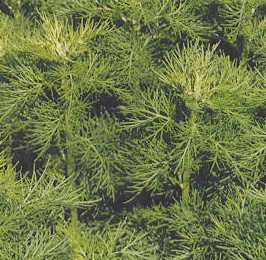
|
| Southernwood plant (lemon fragrance type) |
Southernwood is mostly suited for meats. Similar to mugwort, to which southernwood is far superior, it is a good choice to flavour aromatic and rather fat meat (pork, duck, goose, mutton), the bitter constituents improving digestibility and stimulating the appetite. On the other hand, southernwood can also be used for rather bland meat (veal, turkey), thus adding an interesting taste sensation to an otherwise insipid dish. This half-forgotten herb truly rewards experiments; for example, it can be used for an unusual bouquet garni (see parsley).
Allegedly, southernwood is used to flavour cakes in Italy, but I have never
found any recipes demonstrating this usage. Furthermore, extracts of the plant
are sometimes found in stomachic medicines or herbal liqueurs.
